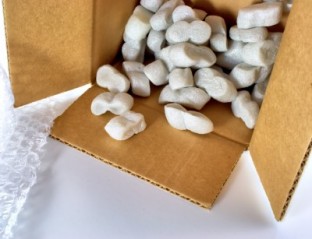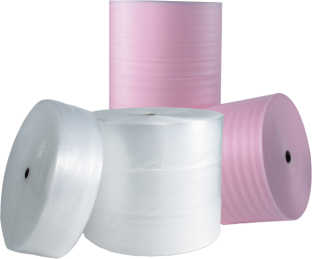 Shipping departments each specialize in different things, so a variety of box filling materials are available to accommodate diverse needs. While tactics vary, protecting packages during shipment is the name of the game for most shippers.
Shipping departments each specialize in different things, so a variety of box filling materials are available to accommodate diverse needs. While tactics vary, protecting packages during shipment is the name of the game for most shippers.
To a certain extent what you’re shipping dictates the best ways to get the job done. Electronics, for example, are well-suited for padding with non-static wraps and packing peanuts that reduce electrical charges during shipment, and so on. Use all the options available to devise the best void filling strategies for items you ship regularly, including foam, bubble products, loose fill and kraft paper.
Bubble Wrap Varieties
Incident-free shipping begins with appropriately sized boxes, which should not leave excessive voids for filling. Some space is required to accommodate cushioning materials, but filling large voids is a waste of resources. When irregularly shaped items create open spaces in boxes, bubble wrap provides a sturdy first line of defense against damage.
 Bubble products generally represent the first layer of insulation closest to boxed contents, allowing them to be secured snugly. To make the wrap, air bubbles of various sizes are molded into plastic sheeting used to protect products from harm. The material is available in rolls with or without perforations as well as sheets and pouches, which allow contents to be slid-in before sealing. Larger bubbles provide heavy duty protection, and anti-static air-bubble products are used to minimize electrical charges when shipping electronics. Specialized adhesive bubble wrap is also available, equipped with sticky surfaces that cling to box contents without leaving residue.
Bubble products generally represent the first layer of insulation closest to boxed contents, allowing them to be secured snugly. To make the wrap, air bubbles of various sizes are molded into plastic sheeting used to protect products from harm. The material is available in rolls with or without perforations as well as sheets and pouches, which allow contents to be slid-in before sealing. Larger bubbles provide heavy duty protection, and anti-static air-bubble products are used to minimize electrical charges when shipping electronics. Specialized adhesive bubble wrap is also available, equipped with sticky surfaces that cling to box contents without leaving residue.
Foam Fillers
Foam helps shippers in two distinct ways: Foam wraps and corners/edges. Conventional air foam products mimic bubble wrap, protecting packages in much the same way bubble options do. In fact, the foam sheets also derive their effectiveness from the air pockets they contain, cushioning against impacts during handling. Air foam sheets are available in a variety of widths, sold in rolls with or without perforations. Pre-cut sheets and pouches provide additional options for using foam fillers.
Foam corners and edges protect boxes within boxes, cradling them tightly inside outer packaging. The expanded polystyrene inserts provide protection against impact during transport, and they also reduce exposure to harmful vibrations.
Loose Fill and Kraft Paper
Light, irregularly shaped items are adequately secured with crumpled kraft paper used to fill voids. Multiple sizes and styles exist, included wax-paper options and even poly coated kraft paper for specialty applications. Materials range from 100% recycled, to combination papers using virgin fibers. Kraft paper is sold in precut sheets and rolls easily installed on horizontal or vertical paper cutters.
Loose fill made from peanut shaped polystyrene is used to cushion box contents from all sides, providing evenly distributed impact resistance and shock absorption. Virgin and recycled options provide the same levels of protection, with anti-static versions limiting static charges when shipping electronics. Completely biodegradable options made from natural materials eventually disappear without a trace. Convenient gravity dispensers make loose fill options ideal for a wide range of shipping room applications.
Flexible fill solutions exist for the items you ship most. Bubble, foam and loose fill options work together to provide comprehensive cushioning for your shipping output.